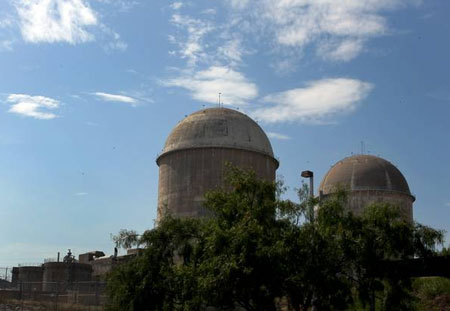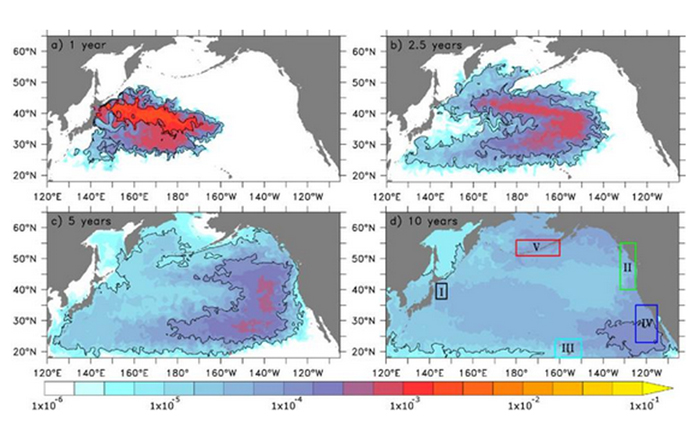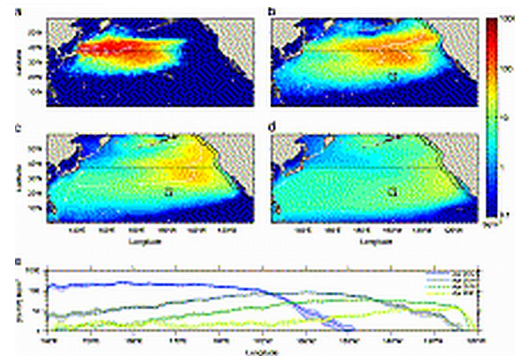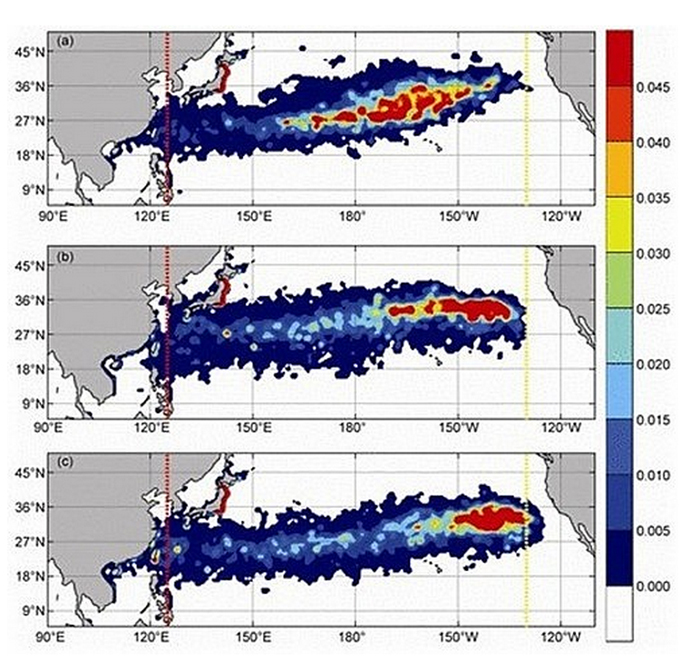Archive for the ‘Nukes’ Category
Nuclear waste storage at plants is debated
November 4, 2013
By Bruce Henderson
bhenderson(at)charlotteobserver.com
Charlotte Observer
Anti-nuclear activists and industry employees packed a meeting Monday on whether nuclear power plants can safely store spent fuel between the time plants retire and a permanent federal disposal site opens.
A federal appeals court last year vacated the Nuclear Regulatory Commission’s "waste confidence" rule, in which the agency said used fuel could be safely stored for at least 60 years after plants retire.
The court told the NRC to analyze the environmental harm if the government doesn’t open a permanent fuel disposal site, and to scrutinize potential fires and leaks in on-site storage pools.
The NRC is now taking public comment on a new, proposed rule. It’s relevant to Charlotte, which is bracketed by Duke Energy’s McGuire and Catawba nuclear plants, and to the Carolinas because of the 12 reactors in those states.
The licenses of McGuire and Catawba expire in the early 2040s.
The issue is important to the nuclear industry because the NRC has stopped issuing licenses for new plants, and license renewals, until a new rule is adopted. That’s expected to be next year.
The industry argues that nuclear plants can safely store used fuel on-site in pools of water or in steel-and-concrete casks, and have ample storage space. The Nuclear Energy Institute, a trade association, says operating experience and studies show very low odds of fires erupting in plant storage pools, one of the issues the NRC is to assess.
Decades of U.S. experience storing used fuel, as well as that of other countries, “points to the same conclusion – we can store spent fuel responsibly," said Steve Nesbit, Duke Energy’s director of nuclear policy and support.
"That doesn’t mean we want to," he added, referring to the government’s failure to open a permanent disposal site.
Anti-nuclear forces say the agency should stop licensing any new nuclear plants, arguing that fuel that will remain radioactive for thousands of years can’t be safely stored.
Storing used fuel at plants, they argue, poses risks including security breaches, unstable fuel and deteriorating storage systems.
Nuclear opponents said their numbers at Monday’s meeting were boosted by construction of new nuclear plants in South Carolina and Georgia.
Louis Zeller, executive director of the Blue Ridge Environmental Defense League, said the NRC’s new rule, which would be applied to all nuclear plants, should be canceled because it ignores the differences between individual plants.
Mary Olson, Southeast regional coordinator of the Nuclear Information and Research Service, added that "the only solution for radioactive waste is to stop making it."
After decades without permanent disposal, she said, “We have nothing to do with it except piling it up – it’s piling up where it’s made and if it’s moved, it’s piled up there. That’s all we have to show up for it."
Spent nuclear fuel, which is hot and highly radioactive when removed from reactors, is immersed in large pools of cooling water that also shield radiation. The fuel is sometimes then transferred to the dry-storage casks.
About 25,000 tons of spent fuel is stored in the Southeast, the U.S. Department of Energy reported in January, including 8,300 tons in the Carolinas. Nationwide, the department said, about 74,000 tons of used fuel is stored at 72 power plants.
Jim Little, chairman of the Carolinas Nuclear Cluster, a trade group, said U.S. nuclear plants have more than enough capacity to store used fuel on-site until the government opens a permanent disposal site.
It’s unknown when or if that will happen. The Obama administration stopped work on the Yucca Mountain site in Nevada that Congress approved more than a decade ago.
"It’s not really a technical issue at all," Little, a retired URS Corp. executive, said before the meeting. "It’s a policy issue."
Anti-nuclear advocates, he added, are looking for a reason to shut down the industry "and this seems to be it."
Henderson: 704-358-5051; Twitter: @bhender
This document contains copyrighted material whose use has not been specifically authorized by the copyright owner. SEED Coalition is making this article available in our efforts to advance understanding of ecological sustainability, human rights, economic democracy and social justice issues. We believe that this constitutes a "fair use" of the copyrighted material as provided for in section 107 of the US Copyright Law. If you wish to use this copyrighted material for purposes of your own that go beyond "fair use", you must obtain permission from the copyright owner.
Comanche Peak’s declining value proves costly for once-flush Somervell County
Oct. 08, 2013
By Bill Hanna
billhanna(at)star-telegram.com
Fort Worth Star-Telegram
GLEN ROSE — Unlike many rural areas in Texas where residents and revenue have steadily declined in recent years, Somervell County has prospered.
The little county tucked next to Hood and Johnson has more than doubled its population since 1980, to roughly 8,800 residents, and boasts several tourist attractions, such as the Dinosaur Valley State Park and Fossil Rim Wildlife Center.
Perhaps the county’s best-known landmark is the Comanche Peak Nuclear Power Plant, which produces enough electricity annually to power 1.15 million homes — and has provided tens of millions of dollars in property taxes to Somervell’s coffers, a seemingly endless bounty of municipal gold.
As the tax dollars poured in — turning the state’s second-smallest county from property-poor to property-rich — Somervell built the Squaw Valley Golf Club, Somervell County Expo Center and Texas Amphitheatre, adding to its draw as a popular destination with day trippers from throughout North Texas.
But as energy prices have plummeted, so has the worth of the 23-year-old Comanche Peak, which lost about $330 million in value this year. And now Somervell County finds itself in somewhat of a financial meltdown.
Comanche Peak’s parent company, Luminant Energy, will pay the county about $8.75 million in taxes, down about $250,000 from 2012 and $350,000 from 2011. That’s after county commissioners voted to increase the tax rate nearly 4.5 cents to more than 40 cents per $100 of property valuation.
A six-figure drop may not seem large in the world of municipal budgets. But Comanche Peak accounts for more than half of the county’s $16.5 million budget.
"Comanche Peak has been the county’s cash cow for several decades, so this devaluation really hurts," said Kathryn Jones, editor of the digital news site glenrosecurrent.com and a resident of the county since 2005. "And there’s not really much else to fall back on. … Nothing can really take the place of Comanche Peak."
To understand the financial weight of the mammoth plant, which was valued at $2.2 billion this year, consider that all of downtown Fort Worth is appraised at $2.9 billion.
The most valuable single property in Tarrant County is the huge Grand Prairie Premium Outlets shopping center at Interstate 20 and Great Southwest Parkway, which is appraised at $139 million.
Comanche Peak’s decreasing values, coupled with tax increases including those from a new hospital district, have sparked complaints from many residents who argue that the commissioners simply don’t know how to manage assets.
Jim Willis of Somervell County, a steady critic of the way the county has operated, said the loss of value in the power plant has been coming for years.
"It was no surprise to anybody," Willis said. "In my opinion, the cuts out there haven’t started yet. They just got a little taste of it."
The Somervell County Hospital Authority, which was approved in May by two votes, took about $2 million in operating expenses off the county’s books but added a tax rate of 10.5 cents per $100 of valuation. Combined, the county’s tax increase and the hospital district levy add about $150 a year in taxes for the owner of a $100,000 home.
Glen Rose contractor Chip Harrison has helped organize a petition drive to force a recall election to dismantle the hospital district.
"I think our hospital authority board never looked at hiring an outside management company or selling it to someone like Texas Health Resources as Cleburne did," Harrison said. "At this point, I would be willing to just hand over the keys and let somebody have it."
If a recall election is called and passes, it would definitely affect the county budget.
"Frankly, if this is dissolved, it will have a domino effect on the entire county and it will crush us," County Judge Mike Ford said.
Changes at Squaw Valley
Squaw Valley Golf Club, a rolling, 36-hole layout cut through thick patches of oak trees, is considered one of the top municipal courses in Texas.
But the course, which had been operated by a private company since it opened in 1992, has been as much financial drain as recreational destination.
Squaw Valley made money its first three years but has been in the red every year since. For years, the county has kicked in an average of almost $540,000 annually to keep it running.
County commissioners voted this year to take over operations and immediately began looking for ways to increase revenue and cut costs.
Greens fees have been increased for county residents, a longtime golf course mechanic was let go and pay was reduced for seven hourly and two salaried employees.
The county at first considered selling the course, only to learn that an appraiser valued its nearly 500 acres at $2.5 million, far less than the more than $15.7 million the county has spent on it.
"Nobody felt good," county auditor Brian Watts said. "Everybody was reaching for the bottle of Tums when they saw it."
County Commissioner Larry Hulsey said: "It’s kind of like having a swimming pool in your back yard that nobody wants. The land has more value [to a developer] without a golf course than with it."
This year, with the county running the course, the county’s take is projected to increase to $1.6 million. There will still be a deficit, with expenditures projected at just over $2 million, officials said.
"Our expectation is that we will be able to reduce that deficit to below $200,000 with tighter controls and better policies in place," Watts said.
Hope for ‘The Promise’
Officials are still discussing what to do with the Texas Amphitheatre, which costs the county about $100,000 annually for upkeep and utilities.
County officials have warned that the facility could close unless someone else takes over its management.
The amphitheater is home to The Promise, a popular biblical-based musical in its 25th season.
"We love The Promise," Ford said. "We just don’t know if we can afford to keep it open."
Many of those affiliated with the production, which runs from late August through the last weekend in October, say closing the amphitheater would be a big blow to the area.
"It’s an institution," said Travis Tyre of Arlington, director of this year’s production . "People from all over the country and all over the world know about The Promise."
County officials have been in talks with the show’s producers, and both sides express hope that a deal can be reached to keep the amphitheater open.
"I’m having some good conversations with them over management and maintenance," Ford said. "We don’t want to lose the asset."
Philip Hobson, a Weatherford rancher and businessman who is one of the original Promise board members, remains optimistic that something will be worked out.
"We are putting in a proposal that involves relieving them of the expenses involved with the amphitheater," Hobson said. "It’s such an underutilized facility."
Expo center deficits
The Somervell County Expo Center, which is in the same complex as the amphitheater, is used primarily for equestrian events. A weekly barrel-racing series is being held this month, and in November, the center will host the four-day North Texas Arabian Shootout, among other events.
But even with its busy schedule, the expo center is projected to run a deficit of $921,000 in the upcoming fiscal year. That’s almost the entire $1.4 million combined operating budget for the Somervell County Expo Center and Amphitheatre.
Ford doesn’t want to see the expo center close and says county officials will spend much of this year trying to cut expenses for next year’s budget, as they did this year with the golf course. He believes the county can find a way to make it run more efficiently.
"That’s why individuals don’t run these things, because they don’t make money," Ford said. "But it has a multimillion-dollar effect with the hotel-motel taxes it brings in and the visitors from out of town. We have already started the process of looking at personnel structure, our administrative structure, to make improvements."
Comanche Peak’s plans
But the biggest uncertainty the county faces is Comanche Peak.
Numerous media reports have speculated that Energy Future Holdings, the parent company of Luminant, is headed toward bankruptcy. What that would mean for Comanche Peak remains unclear.
Reuters reported last week that Energy Future, which has more than $40 billion of debt, wants to finalize a restructuring plan before $250 million in bond payments are due Nov. 1.
Last month, Moody’s Investors Service said it expects parts of the company to seek Chapter 11 protection before year’s end.
Ford, the county judge, said he tries to ignore the rumors.
"Somebody calls me weekly saying that they’ve declared bankruptcy or the plant’s been sold," Ford said.
For now, county officials aren’t expecting dramatic changes and remain hopeful that the plant’s value won’t drop significantly again.
"I don’t honestly think a bankruptcy will have a big effect on us," Chief County Appraiser Wes Rollen said. "To me, a bad scenario for us would be if it sold at half or 75 percent of what we have it for now on the books."
If energy prices rebound, Rollen said, the value of the plant could increase. As recently as 2007, it was valued at $2.7 billion, he said.
Luminant spokesman Brad Watson said the company does not expect changes at Comanche Peak, which employs 1,200.
"We do not anticipate that any potential restructuring would impact Comanche Peak or any of our operations since it would be a financial, not an operational, restructuring," Watson said.
Preparing for future
Dennis Moore, mayor of the county seat of Glen Rose, said he isn’t a fan of government-run enterprises but said his city has benefited from county facilities that attract tourists to stay at motels and eat at restaurants. Because Comanche Peak is outside the city, Glen Rose doesn’t receive any of its property tax benefits.
"If they had to shut down or cut back on something, it’s going to affect us," Moore said.
Officials with the Glen Rose school district, which also receives money from Comanche Peak, said they are more concerned with state budget cuts than with the loss in property taxes from the plant.
"It’s had an impact on us but how it impacts is much different than with the county," Superintendent Wayne Rotan said said. "The state budget cuts have impacted us the most."
If the plant is further devalued, it could eventually affect the school district, but Rotan said trustees have set aside $20 million in reserves as a safeguard.
Other efforts are underway to bolster the county’s tax base.
George Best, who retired to Glen Rose seven years ago from Coppell, is a member of the recently formed Somervell Economic Development Council, which is working to ensure that the county benefits from the construction of the Chisholm Trail Parkway.
The toll road, which is scheduled to open in mid-2014, is expected to cut about 15 minutes off the hourlong drive from Fort Worth to Glen Rose, Best wrote in an email.
"As a result, we believe our community will experience growth as families discover our hometown atmosphere, low (by Metroplex standards) property taxes and exemplary schools," Best said.
The council also wants find ways to encourage commercial growth and promote the area as a retirement community, he said.
"We want to make sure we are … attracting businesses that are complementary with our current tourism and industrial base, along with our community culture," Best said.
This report includes material from the Star-Telegram archives.
Bill Hanna, 817-390-7698 Twitter: @fwhanna
This document contains copyrighted material whose use has not been specifically authorized by the copyright owner. SEED Coalition is making this article available in our efforts to advance understanding of ecological sustainability, human rights, economic democracy and social justice issues. We believe that this constitutes a "fair use" of the copyrighted material as provided for in section 107 of the US Copyright Law. If you wish to use this copyrighted material for purposes of your own that go beyond "fair use", you must obtain permission from the copyright owner.
159 Comanche Peak safety violations noted in federal report

Dallas Moorning News File/Staff Photo
October 15, 2013
The Associated Press
via Dallas Morning News
The Comanche Peak nuclear power plant had 157 lower-level and two higher-level safety violations between 2000 and 2012, according to a federal report.
GLEN ROSE — An unreleased report says two Texas nuclear power plants each experienced more than 150 lower-level safety violations from 2000 through 2012.
The data were included in a Government Accountability Office report obtained by The Associated Press. It is intended to show that safety violations at nuclear plants vary from region to region, in part because of differing rules interpretations. The West region, which includes Texas, had 2 1/2 times the Southeast’s rate of lower-level violations per reactor.
The Comanche Peak plant in Glen Rose had two higher-level violations in addition to its 157 lower-level violations. The South Texas Project plant in Wadsworth had 151 lower-level and no higher-level.
Brad Wilson, a spokesman for Luminant, which owns Comanche Peak, said the company would not comment on a report it couldn’t review.
Lower-level violations pose very low risk. Higher-level violations range from low to high safety significance.
This document contains copyrighted material whose use has not been specifically authorized by the copyright owner. SEED Coalition is making this article available in our efforts to advance understanding of ecological sustainability, human rights, economic democracy and social justice issues. We believe that this constitutes a "fair use" of the copyrighted material as provided for in section 107 of the US Copyright Law. If you wish to use this copyrighted material for purposes of your own that go beyond "fair use", you must obtain permission from the copyright owner.
West Coast of North America to Be Hit Hard by Fukushima Radiation
August 20, 2013
WashingtonsBlog
Radiation Levels Will Concentrate in Pockets In Baja California and Other West Coast Locations
An ocean current called the North Pacific Gyre is bringing Japanese radiation to the West Coast of North America:

North Pacific Subtropical Convergence Zone FDA Refuses to Test Fish for Radioactivity … Government Pretends Radioactive Fish Is Safe
The leg of the Gyre closest to Japan – the Kuroshio current – begins right next to Fukushima:

Kuroshio Current – Colour show water speed. Blue slowest; red fastest
While many people assume that the ocean will dilute the Fukushima radiation, a previously-secret 1955 U.S. government report concluded that the ocean may not adequately dilute radiation from nuclear accidents, and there could be "pockets"and "streams"of highly-concentrated radiation.
The University of Hawaii’s International Pacific Research Center created a graphic showing the projected dispersion of debris from Japan:

Last year, scientists from the National Oceanic and Atmospheric Administration’s (NOAA) Pacific Marine Environmental Laboratory and 3 scientists from the GEOMAR Research Center for Marine Geosciences showed that radiation on the West Coast of North America could end up being 10 times higher than in Japan:
After 10 years the concentrations become nearly homogeneous over the whole Pacific, with higher values in the east, extending along the North American coast with a maximum (~1 × 10-4) off Baja California.
***
With caution given to the various idealizations (unknown actual oceanic state during release, unknown release area, no biological effects included, see section 3.4), the following conclusions may be drawn. (i) Dilution due to swift horizontal and vertical dispersion in the vicinity of the energetic Kuroshio regime leads to a rapid decrease of radioactivity levels during the first 2 years, with a decline of near-surface peak concentrations to values around 10 Bq m-3 (based on a total input of 10 PBq). The strong lateral dispersion, related to the vigorous eddy fields in the mid-latitude western Pacific, appears significantly under-estimated in the non-eddying (0.5°) model version. (ii) The subsequent pace of dilution is strongly reduced, owing to the eastward advection of the main tracer cloud towards the much less energetic areas of the central and eastern North Pacific. (iii) The magnitude of additional peak radioactivity should drop to values comparable to the pre-Fukushima levels after 6–9 years (i.e. total peak concentrations would then have declined below twice pre-Fukushima levels). (iv) By then the tracer cloud will span almost the entire North Pacific, with peak concentrations off the North American coast an order-of-magnitude higher than in the western Pacific.
***

("Order-of-magnitude" is a scientific term which means 10 times higher. The "Western Pacific"means Japan’s East Coast.)
In May, a team of scientists from Spain, Australia and France concluded that the radioactive cesium would look more like this:

And a team of top Chinese scientists has just published a study in the Science China Earth Sciences journal showing that the radioactive plume crosses the ocean in a nearly straight line toward North America, and that it appears to stay together with little dispersion:
On March 30, 2011, the Japan Central News Agency reported the monitored radioactive pollutions that were 4000 times higher than the standard level. Whether or not these nuclear pollutants will be transported to the Pacific-neighboring countries through oceanic circulations becomes a world-wide concern.
***
The time scale of the nuclear pollutants reaching the west coast of America is 3.2 years if it is estimated using the surface drifting buoys and 3.9 years if it is estimated using the nuclear pollutant particulate tracers.
***

The half life of cesium-137 is so long that it produces more damage to human. Figure 4 gives the examples of the distribution of the impact strength of Cesium-137 at year 1.5 (panel (a)), year 3.5 (panel (b)), and year 4 (panel (c)).
***
It is worth noting that due to the current near the shore cannot be well reconstructed by the global ocean reanalysis, some nuclear pollutant particulate tracers may come to rest in near shore area, which may result in additional uncertainty in the estimation of the impact strength.
***
Since the major transport mechanism of nuclear pollutants for the west coast of America is the Kuroshio-extension currents, after four years, the impact strength of Cesium-137 in the west coast area of America is as high as 4%.
Note: Even low levels of radiation can harm health.
This document contains copyrighted material whose use has not been specifically authorized by the copyright owner. SEED Coalition is making this article available in our efforts to advance understanding of ecological sustainability, human rights, economic democracy and social justice issues. We believe that this constitutes a "fair use" of the copyrighted material as provided for in section 107 of the US Copyright Law. If you wish to use this copyrighted material for purposes of your own that go beyond "fair use", you must obtain permission from the copyright owner.
Entergy to Close, Decommission Vermont Yankee

August 27, 2013
For Immediate Release
Contact:
Contact:
Media Relations
Entergy
mburns@entergy.com
(802) 258-2143
Paula Waters
Entergy
pwater1@entergy.com
504-576-4380
Decision driven by sustained low power prices, high cost structure and wholesale electricity market design flaws for Vermont Yankee plant
Focus to remain on safety during remaining operation and after shutdown
New Orleans, La – Entergy Corporation (NYSE: ETR) today said it plans to close and decommission its Vermont Yankee Nuclear Power Station in Vernon, Vt. The station is expected to cease power production after its current fuel cycle and move to safe shutdown in the fourth quarter of 2014. The station will remain under the oversight of the Nuclear Regulatory Commission throughout the decommissioning process.
"This was an agonizing decision and an extremely tough call for us," said Leo Denault, Entergy’s chairman and chief executive officer. "Vermont Yankee has an immensely talented, dedicated and loyal workforce, and a solid base of support among many in the community. We recognize that closing the plant on this schedule was not the outcome they had hoped for, but we have reluctantly concluded that it is the appropriate action for us to take under the circumstances."
The decision to close Vermont Yankee in 2014 was based on a number of financial factors, including:
- A natural gas market that has undergone a transformational shift in supply due to the impacts of shale gas, resulting in sustained low natural gas prices and wholesale energy prices.
- A high cost structure for this single unit plant. Since 2002, the company has invested more than $400 million in the safe and reliable operation of the facility. In addition, the financial impact of cumulative regulation is especially challenging to a small plant in these market conditions.
- Wholesale market design flaws that continue to result in artificially low energy and capacity prices in the region, and do not provide adequate compensation to merchant nuclear plants for the fuel diversity benefits they provide.
Making the decision now and operating through the fourth quarter of 2014 allows time to duly and properly plan for a safe and orderly shutdown and prepare filings with the NRC regarding shutdown and decommissioning. Entergy will establish a decommissioning planning organization responsible for planning and executing the safe and efficient decommissioning of the facility. Once the plant is shut down, workers will de-fuel the reactor and place the plant into SAFSTOR, a process whereby a nuclear facility is placed and maintained in a condition that allows it to be safely secured, monitored and stored.
"We are committed to the safe and reliable operation of Vermont Yankee until shutdown, followed by a safe, orderly and environmentally responsible decommissioning process," Denault said.
Commenting on the future of nuclear power, Denault said: "Entergy remains committed to nuclear as an important long-term component of its generating portfolio. Nuclear energy is safe, reliable, carbon-free and contributes to supply diversity and energy security as part of a balanced energy portfolio."
Financial Implications
Entergy plans to recognize an after-tax impairment charge of approximately $181 million in the third quarter of 2013 related to the decision to shut down the plant at the end of this current operating cycle. In addition to this initial charge, Entergy expects to recognize charges totaling approximately $55 to $60 million associated with future severance and employee retention costs through the end of next year. These charges will be classified as special items, and therefore, excluded from operational results.
The company noted that the estimated operational earnings contribution from Vermont Yankee was expected to be around breakeven in 2013, and generally declining over the next few years. As a result of this decision and based on continuing operations into fourth quarter 2014, the estimated operational earnings change, excluding these special items, is expected to be modestly accretive within two years after shutdown, and cash flow is expected to increase approximately $150 to $200 million in total through 2017, compared to Vermont Yankee’s continued operation.
Regarding decommissioning, assuming end of operations in fourth quarter 2014, the amount required to meet the NRC minimum for decommissioning financial assurance for license termination is $566 million. The Vermont Yankee decommissioning trust had a balance of approximately $582 million as of July 31, 2013, excluding the $40 million guarantee by Entergy Corporation to satisfy NRC requirements following the 2009 review of financial assurance levels. Filings with the NRC for planned shutdown activities will determine whether any other financial assurance may be required and will specifically address funding for spent fuel management, which will be required until the federal government takes possession of the fuel and removes it from the site, per its current obligations.
Vermont Yankee, a single unit boiling water reactor, began commercial operation in 1972. Entergy acquired the plant from Vermont Yankee Nuclear Power Corporation in 2002. In March 2011, the NRC renewed the station’s operating license for an additional 20 years, until 2032.
Additional information regarding today’s announcement is available in the Frequently Asked Questions section of www.entergy.com.
Entergy Corporation, which celebrates its 100th birthday this year, is an integrated energy company engaged primarily in electric power production and retail distribution operations. Entergy owns and operates power plants with approximately 30,000 megawatts of electric generating capacity, including more than 10,000 megawatts of nuclear power, making it one of the nation’s leading nuclear generators. Entergy delivers electricity to 2.8 million utility customers in Arkansas, Louisiana, Mississippi and Texas.
-30-
This document contains copyrighted material whose use has not been specifically authorized by the copyright owner. SEED Coalition is making this article available in our efforts to advance understanding of ecological sustainability, human rights, economic democracy and social justice issues. We believe that this constitutes a "fair use" of the copyrighted material as provided for in section 107 of the US Copyright Law. If you wish to use this copyrighted material for purposes of your own that go beyond "fair use", you must obtain permission from the copyright owner.


